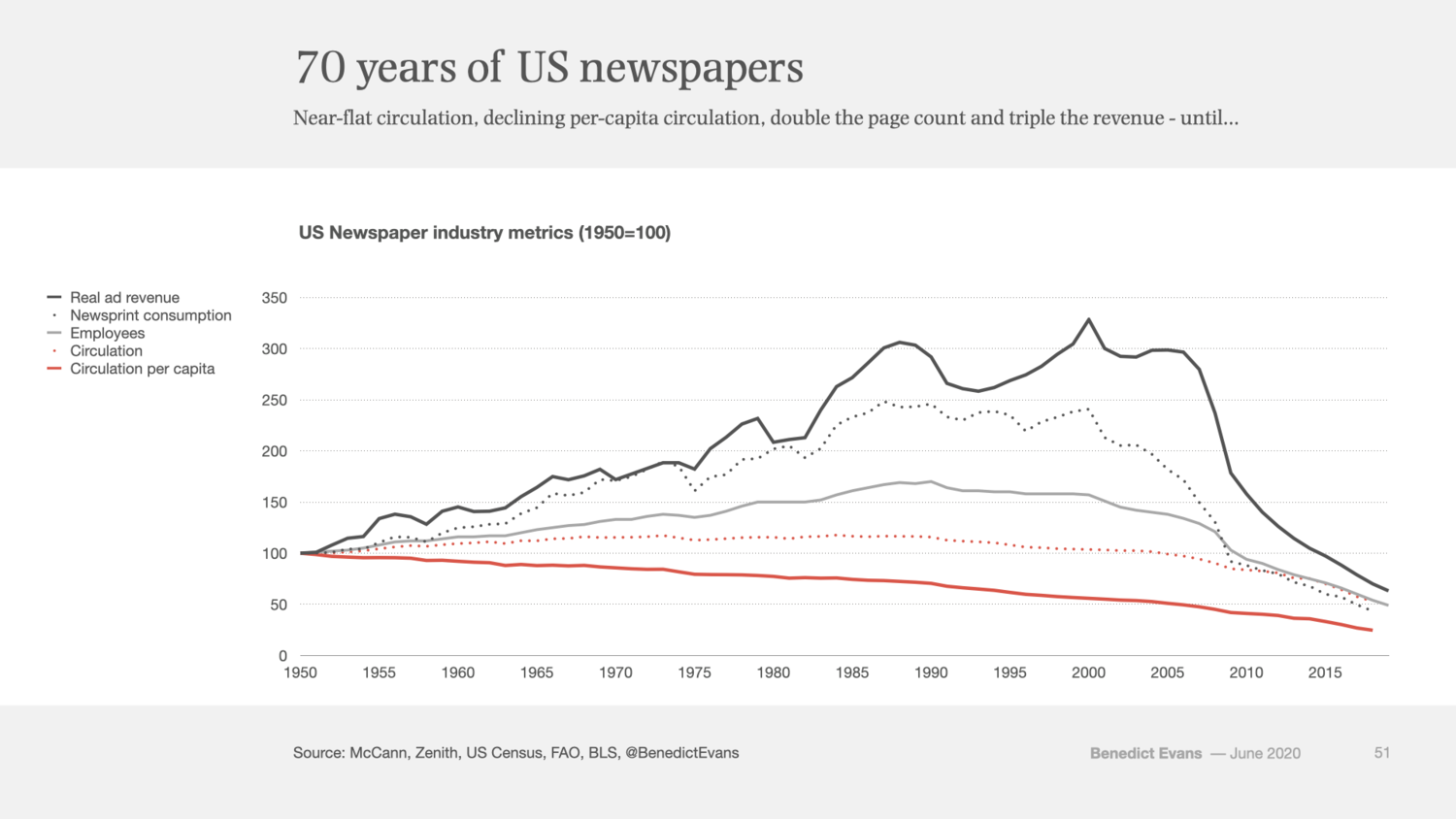What changed was the feed, something uniquely enabled by digital. Whereas a newspaper had to be defined up-front, such that it could be printed and distributed at scale, a feed is tailored to the individual in real-time — and so are the advertisements. Suddenly it was print that was worth pennies, while the Internet generally and mobile especially ... See more


